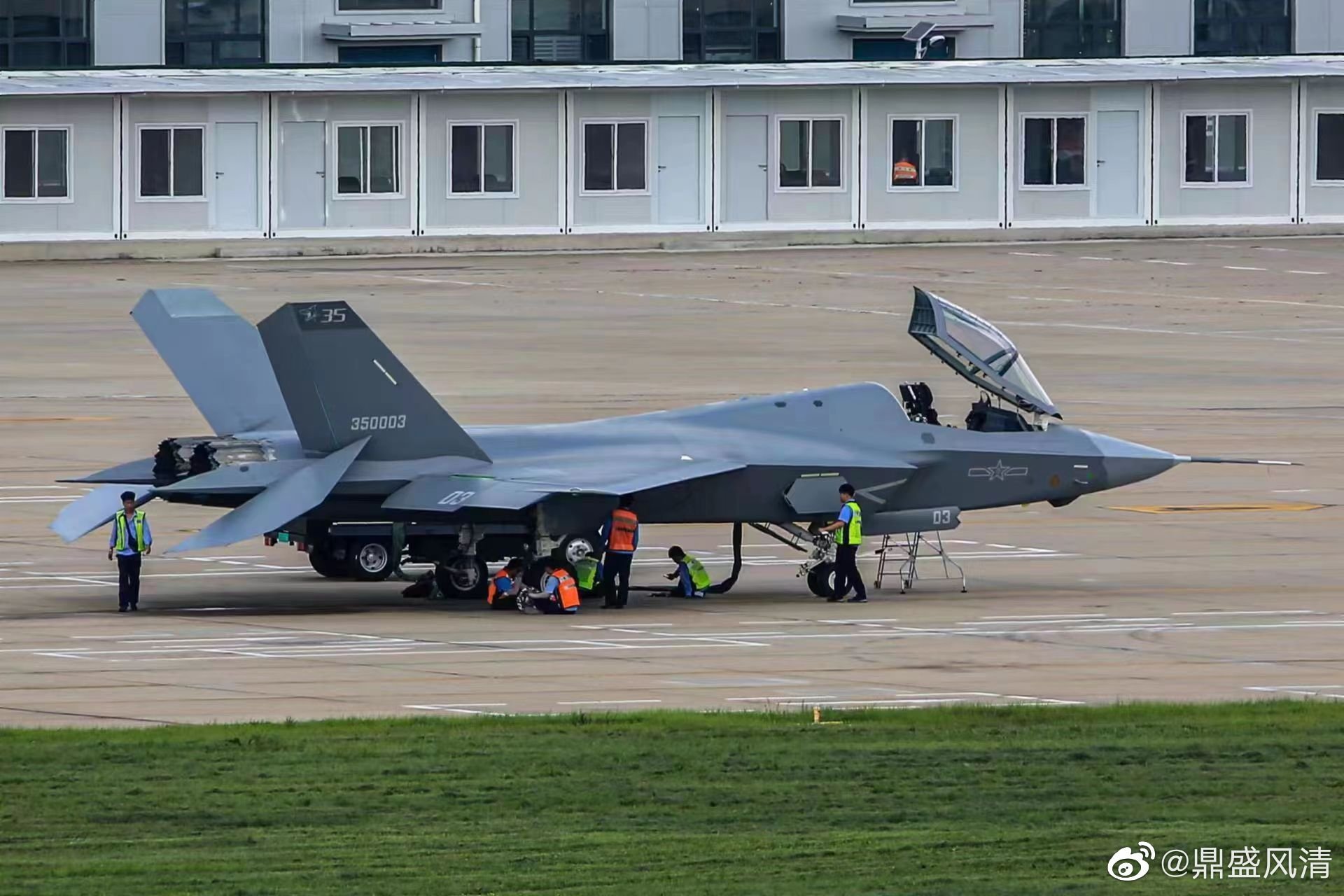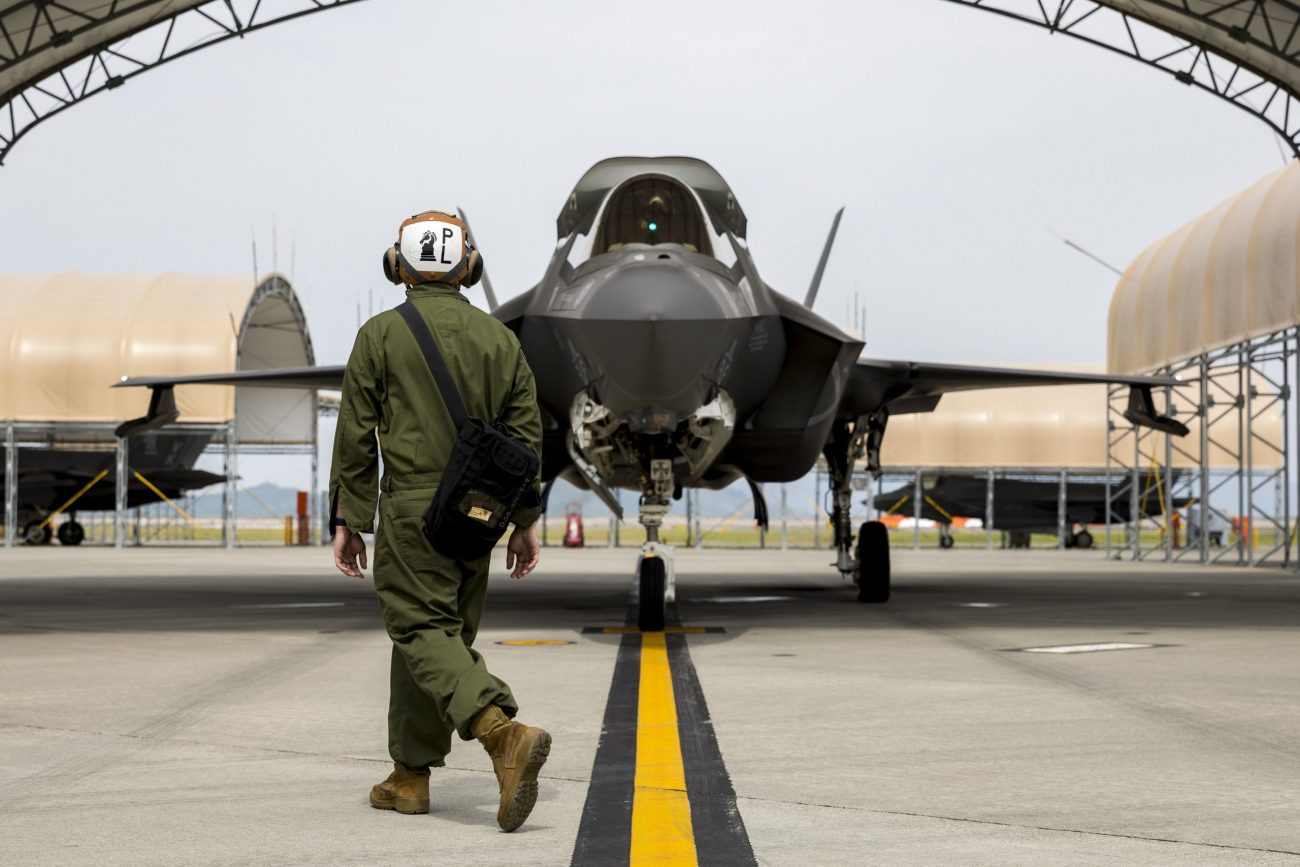Images circulating on social media revealed the FC31/J-35 Gen. 5 stealth fighter to have undergone extensive modifications, indicating it has advanced to the fighter prototype stage.
US Marine Corps Want ‘Ukraine Weapons’ To Battle China After Their Success In Pounding Russia
The Shenyang Aircraft Corporation (SAC)-made FC-31 technology demonstrator (TD) was earlier turned down by the PLA Navy and the People’s Liberation Army Air Force (PLAAF) but was revived for carrier operations after growing tensions with the US in the Western Pacific.
It is supposed to fly from China’s under-construction fourth aircraft carrier along with the J-15T Fei Sha (Flying Shark), the latter of which is expected to be the mainstay of the People’s Liberation Army Navy (PLAN).
The FC-31 was originally meant as a technology demonstrator and an export product only. It failed to attract any international customers, and interest from the People’s Liberation Army Air Force (PLAAF) was also lukewarm initially, which eventually did not place any orders.
J-35 number 350003 … a few details! pic.twitter.com/Yp3JqIWvu4
— @Rupprecht_A (@RupprechtDeino) July 22, 2022
Performance issues and poor engine thrust were some of the reported problems. It also seemed to lack the capacity of the F-35 to mount a centerline gunnery or a jamming pod.
The J-31 fighter’s chief designer, Sun Cong, said while J-31 has better performance than its US counterpart in some aspects, he admitted that it has some flaws.
“Basically, the model has met our expectations,” he was quoted as saying. However, rising tensions with the US in the Western Pacific and the South China Sea during the President Donald Trump administration revived the project as China also needed a second stealth fighter along with the J-20.
What Does The New Design Indicate?
The latest image and another set of grainy video grabs from its first flight on October 29, 2021, bear significant differences from the original FC-31 TD. It includes the fundamental feature of having foldable wings to fit on aircraft carrier decks, lifts, and hangars below the flight deck.
The nose section has what looks like a tilted/slanted opening with jagged edges, as a standard radar deflecting design.
An electro-optical tracking system (EOTS) under the chin and a pair of hexagonal ‘sensors’ behind the nose under the cockpit show a striking similarity between the J-35 and the operational Chengdu J-20 – the features present on the American F-35.
This is probably meant for a minimal commonality between the J-20 and J-35 for ease in supply chain issues, logistics, and maintenance, despite Shenyang and the Chengdu Aircraft Corporation being competitors. Both are State-Owned Enterprises (SOEs), as they are known in China.

Even though the J-20 has been ruled out from carrier operations – given it would require a complete redesign of the airframe to have foldable wings to operate from a carrier – both China’s stealth aircraft will have been envisaged to operate together over the western Pacific.
Naturally, Chinese planners who pioneer “intelligentized warfare” would be inconsistent in not ensuring the two sharing battlespace data between themselves, besides other assets like the KJ-600 Airborne Early Warning (AEW) aircraft and H-20 strategic bomber, provide targeting data for the DF-21D Anti-Ship Ballistic Missile (ASBM) and even control ‘wingmen’ drones.
The J-35 can carry four PL-15 medium-range air-to-air missiles in the internal weapons bay and two short-range PL-10 missiles for dogfights on external hardpoints.
Like the F-35 – whose technology the Chinese have been accused of stealing through cyber hacking for its stealth program – the J-35’s cockpit opens from the front. However, its canopy is shorter than the original FC-31, and the upper fuselage behind it is ‘fatter,’ similar to the carrier-borne F-35B. The front landing gear has a catapult hook to prepare it for launching from the Type 004 carrier.
The engine nozzles are serrated, part of its stealth design. The slimmer rear fuselage is because of the design of the WS-13 (Chinese-made Russian RD-93 turbofans) engines that powers the jet.
Chinese social media defense watchers claim that the initial design was finalized in June this year after the prototype received the new engines and underwent static strength tests, followed by flight tests at each stage at both Shenyang and another testing facility from October 2020.
China’s Second Carrier-Borne Fighter
Since the stealth J-20 was denied by PLAN Rear Admiral Zhang Zhaozhong to be ever used from a carrier since its structure and components were developed for land-based use, China decided to pursue the FC-31/J-35 to have a Gen. 5 stealth jet as its second carrier-borne fighter.
It puts it in league with the US, which has carrier-borne pair of a stealth F-35 and a Gen. 4++ F/A-18 Super Hornet, with a land-based F-22 Raptor.

China now fields its team of a J-15T Gen 4+ and a J-35 Gen. 5 to operate from its flattops and a J-20′ Mighty Dragon’ to take off from the mainland.
Referring to the FC-301/J-35, Beijing-based aviation expert Li Jie said it was risky to “fly a new aircraft on a totally newly designed aircraft carrier,” like the newly launched Type 003 ‘Fujian.’
Its tests, improvements, and the final production variant are therefore likely to be aligned over the two to three years by the time Type 004 is launched.
Leaked photos from June last year showed J-35 and J-15 Fei Sha (Flying Shark) dummies on a mock-up carrier deck. The J-15 is a copy of the Russian Su-33.
Another March 2022 satellite pic of the PLA Naval Aviation Testing and Training Complex at Liaoning showed J-35a alongside J-15s (‘Flying Shark’), that already fly from the Liaoning (26 in numbers) and the Shandong carriers (32 units).
- The author can be reached at satamp@gmail.com
- Follow EurAsian Times on Google News




